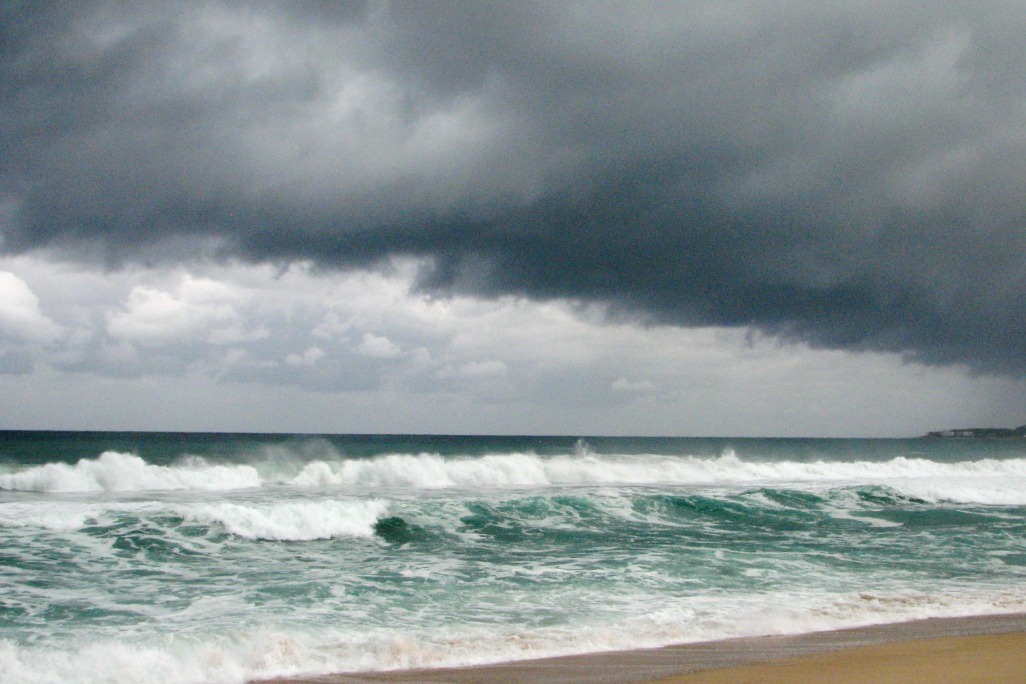Good cop, bad cop? 红脸和白脸
中国日报网 2019-04-12 11:46

Reader question:
Please explain “good cop, bad cop” in this example: “Ma and pa plays good cop, bad cop. Usually Ma is the good cop.”
My comments:
In China, people say the same thing, or similar thing. They say parents play the red face-white face game. One plays the red face, the other white face.
The red face, of course, represents the good guy while the white face stands for the bad guy. This expression is inspired by traditional operas in which the good guy’s face is painted red while the bad guy always has his face smeared in white.
Similarly in the good cop-bad cop game, the good cop is the good guy who’s friendly and sympathetic while the bad cop is strictly stern, hard-line and threatening. This expression is inspired by the way the police (cops) interrogate someone in order to draw a confession.
In this type of interrogations, the bad cop usually comes out first, sounding tough and intimidating, going hard at the suspect or criminal listing all the dire consequences facing the latter if he or she does not tell everything and fully cooperate. Later, if he fails, the good cop appears to try a softened approach. The good cop, you know, will ask how they are doing, offer them a cup of water or cigarette, inquire about their family and how he, the cop, too, has a daughter similar to theirs in age and so forth.
All this is to soften the defendant’s defense. Often, hardened criminals have no problem dealing with mean, intimidating bad cops but simply collapse in front of a good cop – presumably due to the fact that a sympathetic word from the police is rare and hard to come by.
Anyways, good cop-bad cop is a double act that often works. In our example, whenever the child does something wrong, the father will give him a severe scolding, plus, perhaps, a slap or two on the backside. Afterward, the good-cop mother appears to ask the child to change his ways but not in a coercive manner. She does it in a consoling and caressing way, saying how dad means well, if you still feel any pain, how what dad does to you is good for you and so forth.
Again, in Chinese parley, pa gives one slap, ma give you two caresses afterward.
In this day and age, it is of course gross for feudal, backward and incompetent parents to resort to physical abuse in child rearing. So it is important for me to emphasize that you should try not to take the one slap-two caresses approach too literally.
Namely, don’t lay a hand on a child, or anyone for that matter.
However, nevertheless and be as it may, I’m sure you’ve got the point.
So now, no more ado, media examples of good cop-bad cop, old and recent:
1. When the members of the Federal Reserve board speak, their words are closely scrutinized. Maybe even too closely. In some pessimistic comments about the economy, Ben Bernanke mentioned the recession was likely “technically” over, but the pessimism was lost amid the hubbub focused on the idea that he declared an end to the recession.
So it’s been the past month. Although the Fed’s Open Market Committee voted unanimously on its policy statement several Fed governors and presidents have made statements that suggested conflicting views. But the minutes of the Fed's September meeting show the views are not yet that divergent.
St. Louis Fed President James Bullard said this past weekend that inflation may be a concern in the medium term. The Fed's printing of money “may lead to inflation in the medium term, depending on markets' expectations of monetary policy going forward,” Bullard said. Thomas Hoenig, the president of the Kansas City Fed, said that the Fed may need to tighten things up “sooner rather than later.”
Meanwhile, other Fed policymakers have been more pessimistic. “I don’t think a V-shaped recovery is the most likely outcome this time around,” said Fed Vice Chairman Donald Kohn in a speech Tuesday. Fed Gov. Dan Tarullo said the turnaround “should not be overstated.”
Are the views really that different?
...
The main split on the Fed is supposedly between inflation hawks and inflation doves. Bullard, suggesting that medium-term inflation is a risk, must be a hawk. Tarullo, saying not to overstate things, is apparently a dove. (Bullard does not currently sit on the Open Market Committee, which has a rotating membership, but will next year.)
But when Fed officials sit down to talk about inflation, they say it is likely to remain subdued. The reason for this is slack: With so many people out of work, businesses cannot raise prices without losing customers. A few officials noted, however, that even with slack in the economy, inflation can come simply because people expect inflation. And participants noted slack is hard to measure. A contentious point for the hawks to make? Nope. According to the minutes, everyone agreed.
“In the end, the main insight from the minutes came from what was not discussed at the meeting,” says Millan Mulraine, an economics strategist for TD Securities. “In particular, there appears to have been no discussion on changing or modifying the reference to keeping the policy rate exceptionally low for an extended period of time. Neither was there any deliberation on defining an exit strategy.” What was agreed was that officials had to make it clear that they could apply the brakes when necessary.
Suddenly, the statements from the governors don’t seem so contradictory. One governor says some variant of “there’s still a lot of slack for now,” and others come out and talk the tough line of “we will have to raise” eventually. Whether or not it is deliberate, the Fed’s good cop, bad cop strategy sends the message the markets need. For now, we're keeping rates low to get growth going, says one governor, but we’ll hit the brakes when needed, says the next.
- The Fed Plays Good Cop, Bad Cop, Forbes.com, October 14, 2009.
2. The showdown over public disclosure of special counsel Robert Mueller’s report is the latest in a line of fights over important Washington reports that threaten to reveal too much about the U.S. government or the people who run it.
Since the probe into President John F. Kennedy’s assassination inaugurated our era of official investigative reports, government officials have clashed over what the public has a right to know. Some famous government reports, like the Senate Intelligence Committee’s investigation into the George W. Bush administration’s torture policy, remain largely hidden from the public.
Democrats are fighting to ensure that the Mueller report into Russian meddling in the 2016 election and the Trump campaign’s potential involvement doesn’t meet the same fate. The House Judiciary Committee authorized the use of subpoenas to obtain the unredacted Mueller report from the Department of Justice on Wednesday. The move by investigators put Congress into a direct fight with the executive branch over the report and its contents, little of which has been made available to the public.
Past fights over disclosure of Washington reports do not provide a roadmap to how the Mueller report clash will play out. Each disclosure fight has played out under its own set of rules, in its own political environment and with its own group of actors. The fight over the Mueller Report will play out under a set of regulations that hasn’t previously spurred this kind of clash.
What the history of these fights over official reports does show is that, when tested by scandal, law-breaking or tragedy, the legitimacy of democratic government rests on the broadest disclosure possible.
...
A cascade of revelations about what the U.S. government had been doing ― and covering up ― would only fuel the flames of conspiracy. The 1971 leak of the Pentagon Papers proved that every post-war president lied to the public about Vietnam. Then Richard Nixon resigned the presidency because he was a crook. And just months after that, investigative journalist Seymour Hersh revealed that the CIA was engaged in intelligence operations on U.S. soil against U.S. citizens.
Sen. Frank Church, a Democrat from Idaho, and Rep. Otis Pike, a Democrat from New York, launched investigations and President Gerald Ford appointed a commission to be led by Vice President Nelson Rockefeller in the mold of the Warren Commission.
Church and Pike played good cop-bad cop with the intelligence agencies. Unlike Church, Pike initially refused to reach an agreement with the Ford administration about how the committee would handle classified information. Where Church was eventually able to release a series of damning reports to the public, the Ford administration fought Pike tooth and nail.
This was where the first big fight over a report’s release happened. The intelligence agencies’ efforts would provide a template for their future suppression of potentially damaging information.
Church informed the CIA that he would not suppress revelations about its involvement in overseas assassinations, spurring the Ford administration to suppress Pike’s even more damning report. After rejecting a deal with Ford to obtain certain classified information, Pike ultimately gave in to receive some documents on loan by giving the president the final say over declassification. Ford took advantage of this deal to suppress the entire report when Pike submitted it.
It took two weeks before excerpts of the report leaked into the pages of the Village Voice. Pike’s report slammed the Ford administration for “foot-dragging, stone-walling, and careful deception.”
And that’s where the finger-pointing started. Ford blamed Pike. Pike said it was a CIA frame job. The reality was more mundane. Before Ford suppressed the report, someone in Congress gave it to CBS journalist Daniel Schorr. Schorr, in possession of a suddenly classified document, decided that he “could not be the one responsible for suppressing the report.”
The Church and Pike Committee Reports revealed an out-of-control U.S. intelligence establishment that spied on American citizens, conducted undisclosed LSD tests, subverted domestic political activity, plotted (or maybe succeeded) to assassinate foreign leaders and spent hundreds of millions of dollars directly and indirectly interfering in foreign democratic elections.
The select investigative committees effectively transformed into the permanent intelligence committees that exist today. The rules they worked out to obtain, review and declassify executive branch intelligence became the rules for the permanent committees. But the Washington establishment was finally able to swing public sentiment against further investigations after undercover CIA officer Richard Welch was killed overseas.
During Church’s 1980 re-election campaign, Republican Sen. Jim McClure, Church’s fellow Idaho senator, blamed Church and his report for Welch’s death ― although there was no connection between the two. Church lost by 4,000 votes. It turns out, some people didn’t really want to know.
- How Past Bombshell Reports Paved The Way For The Mueller Report, RocketNews.com, April 7, 2019.
3. In President Trump’s latest blowup over immigration, senior policy adviser Stephen Miller hovered omnipresent in the background — goading him in his threats to close the border, warning him of the dangers of looking weak and encouraging the president’s sudden purge of his homeland security team.
Another top adviser who has Trump’s ear on immigration, his son-in-law Jared Kushner, maintained a lower profile during the uproar. Shortly before joining Trump on a trip to the southern border — where the president said that the “country is full” — Kushner met privately with the Mexican ambassador to discuss a more collaborative approach.
The contrast highlights the good cop-bad cop roles on immigration that Kushner, 38, and Miller, 33, now inhabit in Trump’s West Wing, with the latter ascendant as he pushes a frustrated president to champion draconian border policies and rhetoric.
The two political survivors from Trump’s 2016 campaign have emerged as all but untouchable because of their close relationships — and, in Kushner’s case, familial ties — with the president. But if Miller represents Trump’s id — reaffirming his hard-line immigration impulses — Kushner attempts to channel the president’s desire to be seen as a consummate dealmaker.
The differences put the two advisers on a potential collision course — adding to the swirl of confusion over how Trump intends to cope with a surge of migrants at the border, according to interviews with 21 White House aides, administration officials, lawmakers, Republican operatives and Trump confidants, many of whom spoke on the condition of anonymity to reveal private discussions.
- Miller and Kushner on a potential collision course in Trump’s border crisis, WashingtonPost.com, April 10, 2019.
本文仅代表作者本人观点,与本网立场无关。欢迎大家讨论学术问题,尊重他人,禁止人身攻击和发布一切违反国家现行法律法规的内容。
About the author:

Zhang Xin is Trainer at chinadaily.com.cn. He has been with China Daily since 1988, when he graduated from Beijing Foreign Studies University. Write him at: zhangxin@chinadaily.com.cn, or raise a question for potential use in a future column.
(作者:张欣 编辑:丹妮)

















 英语点津微信
英语点津微信 双语小程序
双语小程序